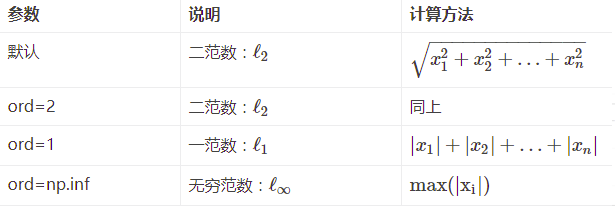k-Nearest Neighbor (kNN) exercise

1 # Run some setup code for this notebook. 2 3 import random 4 import numpy as np 5 from cs231n.data_utils import load_CIFAR10 6 import matplotlib.pyplot as plt 7 8 # This is a bit of magic to make matplotlib figures appear inline in the notebook 9 # rather than in a new window. 10 %matplotlib inline 11 plt.rcParams['figure.figsize'] = (10.0, 8.0) # set default size of plots 12 plt.rcParams['image.interpolation'] = 'nearest' 13 plt.rcParams['image.cmap'] = 'gray' 14 15 # Some more magic so that the notebook will reload external python modules; 16 # see http://stackoverflow.com/questions/1907993/autoreload-of-modules-in-ipython 17 %load_ext autoreload 18 %autoreload 2

1 # Load the raw CIFAR-10 data. 2 cifar10_dir = 'cs231n/datasets/cifar-10-batches-py' 3 4 # Cleaning up variables to prevent loading data multiple times (which may cause memory issue) 5 try: 6 del X_train, y_train 7 del X_test, y_test 8 print('Clear previously loaded data.') 9 except: 10 pass 11 12 X_train, y_train, X_test, y_test = load_CIFAR10(cifar10_dir) 13 14 # As a sanity check, we print out the size of the training and test data. 15 print('Training data shape: ', X_train.shape) 16 print('Training labels shape: ', y_train.shape) 17 print('Test data shape: ', X_test.shape) 18 print('Test labels shape: ', y_test.shape)

1 # Visualize some examples from the dataset. 2 # We show a few examples of training images from each class. 3 classes = ['plane', 'car', 'bird', 'cat', 'deer', 'dog', 'frog', 'horse', 'ship', 'truck'] 4 num_classes = len(classes)#类别数目 5 samples_per_class = 7 # 每个类别采样个数 6 #enumerate() 函数用于将一个可遍历的数据对象(如列表、元组或字符串)组合为一个索引序列,同时列出数据和数据下标,一般用在 for 循环当中。 7 for y, cls in enumerate(classes): 8 #输入一个矩阵,返回了其中非零元素的位置.找出标签中y类的位置 9 idxs = np.flatnonzero(y_train == y) 10 11 '''choice(a, size=None, replace=True, p=None)表示从a中随机选取size个数, 12 replacement 代表的意思是抽样之后还放不放回去,如果是False的话,那么通一次挑选出来的数都不一样, 13 如果是True的话, 有可能会出现重复的,因为前面的抽的放回去了。 14 p表示每个元素被抽取的概率,如果没有指定,a中所有元素被选取的概率是相等的。 15 ''' 16 idxs = np.random.choice(idxs, samples_per_class, replace=False) #从中选出我们所需的7个样本 17 for i, idx in enumerate(idxs): #对所选的样本的位置和样本所对应的图片在训练集中的位置进行循环 18 plt_idx = i * num_classes + y + 1 # 在子图中所占位置的计算 19 #前两个数表示子图组成的矩阵的行列数,比如有6个子图,排列成3行2列,那就是subplot(3,2,X)。最后一个数表示要画第X个图了。 20 plt.subplot(samples_per_class, num_classes, plt_idx) # 说明要画的子图的编号 21 plt.imshow(X_train[idx].astype('uint8')) # 画图 22 plt.axis('off') 23 if i == 0: 24 plt.title(cls) # 写上标题,也就是类别名 25 plt.show()

1 # Subsample the data for more efficient code execution in this exercise 2 num_training = 5000 3 mask = list(range(num_training)) 4 X_train = X_train[mask] 5 y_train = y_train[mask] 6 7 num_test = 500 8 mask = list(range(num_test)) 9 X_test = X_test[mask] 10 y_test = y_test[mask] 11 print(X_train.shape, X_test.shape) 12 # Reshape the image data into rows 13 X_train = np.reshape(X_train, (X_train.shape[0], -1))#也可以用X_train.reshape( (X_train.shape[0], -1)),-1代表后面多维数据整合成一个一维数据 14 X_test = np.reshape(X_test, (X_test.shape[0], -1)) 15 print(X_train.shape, X_test.shape)

1 from cs231n.classifiers import KNearestNeighbor 2 3 # Create a kNN classifier instance. 4 # Remember that training a kNN classifier is a noop: 5 # the Classifier simply remembers the data and does no further processing 6 classifier = KNearestNeighbor()#创建一个实例 7 classifier.train(X_train, y_train)
We would now like to classify the test data with the kNN classifier. Recall that we can break down this process into two steps:
- First we must compute the distances between all test examples and all train examples.
- Given these distances, for each test example we find the k nearest examples and have them vote for the label
Lets begin with computing the distance matrix between all training and test examples. For example, if there are Ntr training examples and Nte test examples, this stage should result in a Nte x Ntr matrix where each element (i,j) is the distance between the i-th test and j-th train example.
Note: For the three distance computations that we require you to implement in this notebook, you may not use the np.linalg.norm() function that numpy provides.
First, open cs231n/classifiers/k_nearest_neighbor.py and implement the function compute_distances_two_loops that uses a (very inefficient) double loop over all pairs of (test, train) examples and computes the distance matrix one element at a time.
注:np.linalg.norm()功能是求范数
1、linalg=linear(线性)+algebra(代数),norm则表示范数。
2、函数参数
x_norm=np.linalg.norm(x, ord=None, axis=None, keepdims=False)
①x: 表示矩阵(也可以是一维)
②ord:范数类型
向量的范数:


矩阵的范数:
ord=1:列和的最大值
ord=2:|λE-ATA|=0,求特征值,然后求最大特征值得算术平方根
ord=∞:行和的最大值
③axis:处理类型
axis=1表示按行向量处理,求多个行向量的范数
axis=0表示按列向量处理,求多个列向量的范数
axis=None表示矩阵范数。
④keepding:是否保持矩阵的二维特性
True表示保持矩阵的二维特性,False相反
1、linalg=linear(线性)+algebra(代数),norm则表示范数。
2、函数参数
x_norm=np.linalg.norm(x, ord=None, axis=None, keepdims=False)
①x: 表示矩阵(也可以是一维)
②ord:范数类型
向量的范数:

矩阵的范数:
ord=1:列和的最大值
ord=2:|λE-ATA|=0,求特征值,然后求最大特征值得算术平方根
ord=∞:行和的最大值
③axis:处理类型
axis=1表示按行向量处理,求多个行向量的范数
axis=0表示按列向量处理,求多个列向量的范数
axis=None表示矩阵范数。
④keepding:是否保持矩阵的二维特性
True表示保持矩阵的二维特性,False相反
